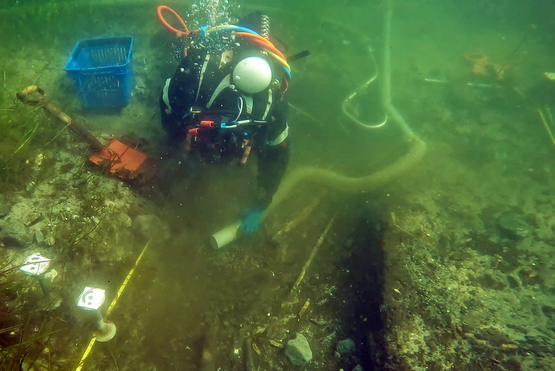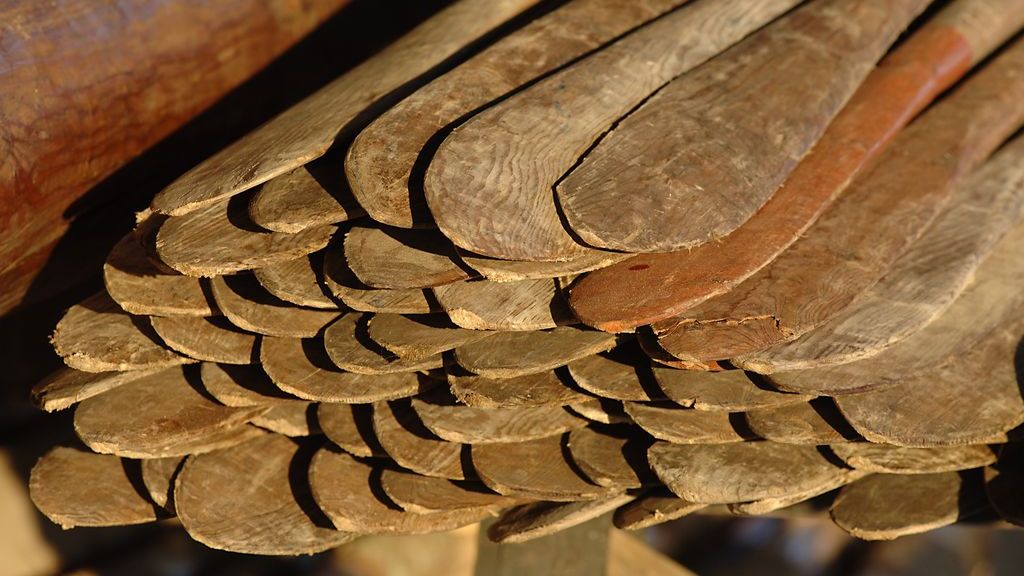One of the best-preserved underwater Stone Age settlements in the world is located at Tudse Hage, near the mouth of Skælskør Fjord on the west coast of the Danish island of Zealand
The settlement is over 7,000 years old and dates back to the Early Stone Age.
The Viking Ship Museum is currently conducting an underwater investigation of the unique archaeological site at Tudse Hage.
The area around Tudse Hage contains exceptionally well-preserved and rare ancient artifacts, but after having been safely buried under meters of sand and silt, erosion now threatens to wash away all traces.
Revelations from an underwater Stone Age World
The Viking Ship Museum, along with researchers from the National Museum, is mapping the preservation conditions around a 7,000-year-old underwater Stone Age settlement from the Ertebølle culture. The investigations are funded by the Danish Agency for Culture and Palaces' fund for sites threatened by cultivation and erosion, as severe erosion threatens to destroy the site's invaluable cultural heritage.
Tudse Hage is one of the best-preserved underwater Stone Age settlements in the world. Finds from the area include unique items such as tools made of antler and bone, remains of log boats, paddles, and, notably, rare discoveries of well-preserved fishing equipment, such as a fully intact eel trap, which is now gently protected under a layer of sandbags.
"The seas around Denmark hold some of the best-preserved Stone Age settlements in the world. At Tudse Hage, the preservation conditions are so good that the leaves from trees that are 7,000 years old are still green when we reach the ancient settlement layers," says curator Morten Johansen, head of maritime archaeological investigations at the Viking Ship Museum in Roskilde.
» Follow this link to watch video from the underwater excavation
Technology changed people's lives 7,000 years ago
Tudse Hage is not a new discovery. The site was first found in the 1950s by a recreational diver, and since then, the area has been the subject of numerous excavations and studies.
This year, archaeologists expect to find even more traces of Stone Age daily life and perhaps gain answers as to how the development of specialised fishing and hunting technology changed people's lives 7,000 years ago.
"Underwater Stone Age settlements provide us with completely new knowledge about how people lived 7-9,000 years ago. Here, we can gain insight into technological development and find answers to big questions about when humans started building boats and using fishing tools—developments that significantly changed people's ability to gather food and create connections across the rising seas," explains Morten Johansen.
The settlement lies in two meters of water
The Tudse Hage settlement is located just 50 meters from the coast at a depth of 2 to 3.5 meters and covers an area of approximately 250 by 250 meters.
The preservation conditions at Tudse Hage have been so optimal that organic materials, which would normally have decayed on land, are nearly intact. Tools, raw materials, and the personal equipment of prehistoric people, preserved in ancient silt, tell the story of a world that was submerged after the Ice Age when the sea levels rose significantly.
The fight against erosion
However, these traces are starting to fade. Erosion at Tudse Hage has been significant in recent years. Parts of the settlement have been exposed by the force of the waves, and maritime archaeologists have documented such extensive sediment loss that the fragile settlement material is at risk, explains Morten Johansen.
"It’s no longer just a theoretical risk; erosion is already well underway. In 2023, we documented changes in sedimentation and found several exposed artifacts lying freely on the seabed, including large, intact red deer antlers and half of a dog skull. This tells us that the settlement layer is undergoing rapid degradation."
The goal of the investigations is therefore not just to document the site itself but also to understand how changes in current conditions and erosion affect the preservation of these unique cultural relics.
"Every time storms hit the area, more of the hidden layers loosen, and with that goes our chance to learn about ancient technology, hunting methods, and daily life," Morten Johansen emphasizes.
The museums continue to work with recreational divers to monitor the Stone Age site, and it is partly based on their recurring observations that archaeologists know that ancient finds are regularly exposed in the area.
Stone Age Atlantis disappears forever
Tudse Hage has the potential to reveal an entirely new side of Denmark's prehistory. But if erosion is allowed to continue without extensive excavations, this opportunity will be lost—like a Stone Age Atlantis slowly sinking into the oblivion of the sea.
» Follow this link to find press photos from the underwater excavation
Facts about the 2024 investigations at Tudse Hage:
The investigations are being carried out in collaboration between the Viking Ship Museum and the National Museum, with the Viking Ship Museum's maritime archaeologists responsible for the underwater excavation, while researchers from the National Museum focus on erosion monitoring and preservation condition analysis.
The primary goal of the research is to document the parts of the settlement that are still preserved before erosion causes further damage. They will also investigate possible structures and traces of activities such as hunting and fishing, which may provide new insights into the way of life in the Ertebølle culture.
Samples for C14 dating, pollen analysis and microorganism studies will also be taken to understand the preservation degree of the materials.
The settlement at Tudse Hage is dated to the Ertebølle culture (approx. 5400-3950 BC), and there may potentially be traces from the even older Kongemose culture (approx. 6400-5400 BC) in deeper waters.
The excavation is funded by the Danish Agency for Culture and Palaces' fund for sites threatened by cultivation and erosion (Slots- og Kulturstyrelsens pulje for dyrknings- og erosionstruede lokaliteter), as severe erosion threatens to destroy the settlement's invaluable cultural heritage.



